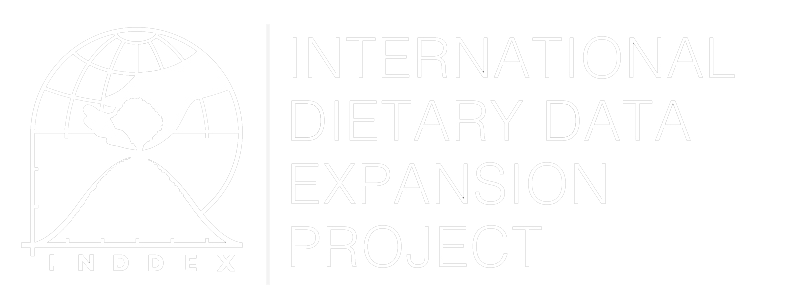Summary
The 24-hour Dietary Recall (24HR) method provides comprehensive, quantitative information on individual diets by querying respondents about the type and quantity of all food and beverages consumed during the previous 24-hour period (Gibson & Ferguson, 2008). A standard multiple pass 24HR includes having the respondent iteratively provide increasingly granular data about each food or drink and its preparation method and other attributes, as well as an estimation of the portion size consumed. The multiple pass approach has been validated in many low- and middle-income countries (Gibson et al., 2017).
Enumerator-administered, rather than self-administered, 24HRs are often used in low- and middle-income countries because they are quick, culturally sensitive, and provide quantitative data on both foods and nutrients (Gibson et al., 2017). Data from 24HR can be used to assess dietary patterns, food groups, or nutrient intake. In order to analyze the nutrient content, the food data must be matched with nutrient information from a food composition database. Mean intakes of foods and nutrients can be measured using a single 24HR, while assessing the "usual intake" of a population requires that repeat 24HRs are collected from a sub-sample of the study population (Gibson & Ferguson, 2008).
Individual-level quantitative dietary data can also be used to develop a better understanding of typical household food preparation, cooking methods, and brand names of foods consumed within the household. Furthermore, if individual-level dietary data are collected in conjunction with information on socioeconomic status, education, and health, the data can be used to examine linkages between income levels and dietary choices, as well as dietary patterns and health outcomes.
While 24HRs offer a higher degree of accuracy in assessing food and nutrient intake relative to Food Frequency Questionnaires (FFQ) or estimates derived from Household Consumption and Expenditure Surveys (HCES), they are collected infrequently on nationally representative samples, and when they are collected, these data are typically not publicly available (Pisa et al., 2018). However, there is increasing interest in, and demand for, individual-level quantitative dietary data, particularly in light of the nutrition transition and rapid food system changes (Coates et al., 2017). For example, the Food and Agriculture Organization and World Health Organization Global Individual Food consumption data Tool (FAO/WHO GIFT) aims to make publicly available existing quantitative individual food consumption data from countries all over the world. In addition, the Global Dietary Database (GDD) provides information on dietary intakes of foods and nutrients for children and adults by age, sex, pregnancy/nursing status, rural/urban, and level of education.
Strengths:
- 24HRs provide quantitative estimates of individual food consumption and nutrient intake
- Can structure survey—and analyses—to include information on food sources and preparation methods
- Can account for foods consumed together that may enhance or inhibit micronutrient absorption
- Offer a higher degree of accuracy in assessing food and nutrient intake relative to FFQs or estimates derived from HCES
Weaknesses:
- Given relative complexity of 24HR surveys, significant training of enumerators is required to minimize errors in data collection
- Accurately recalling the quantity consumed can be challenging for respondents and a relatively large source of error in 24HRs compared to enumerator-administered Weighed Food Records (WFR)
- Data are frequently collected from small samples that are not nationally representative
- As with other surveys that rely on memory and are administered by an enumerator, there is potential for recall bias and interviewer bias
- Like most surveys, to capture seasonal variation data collection must span the entire year or be repeated in multiple seasons
